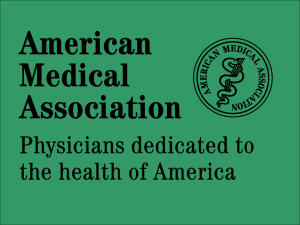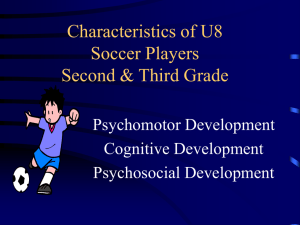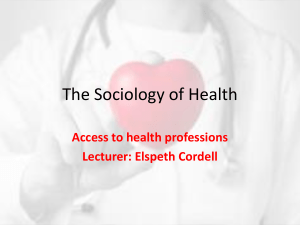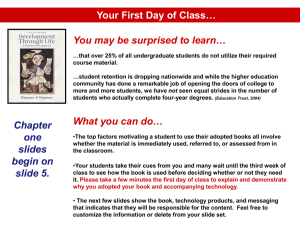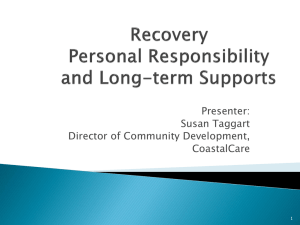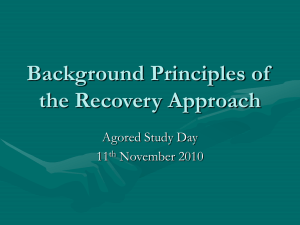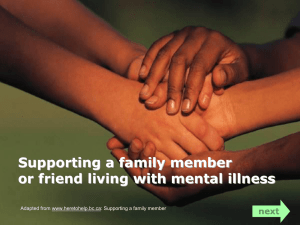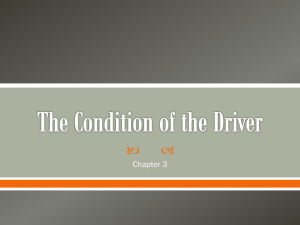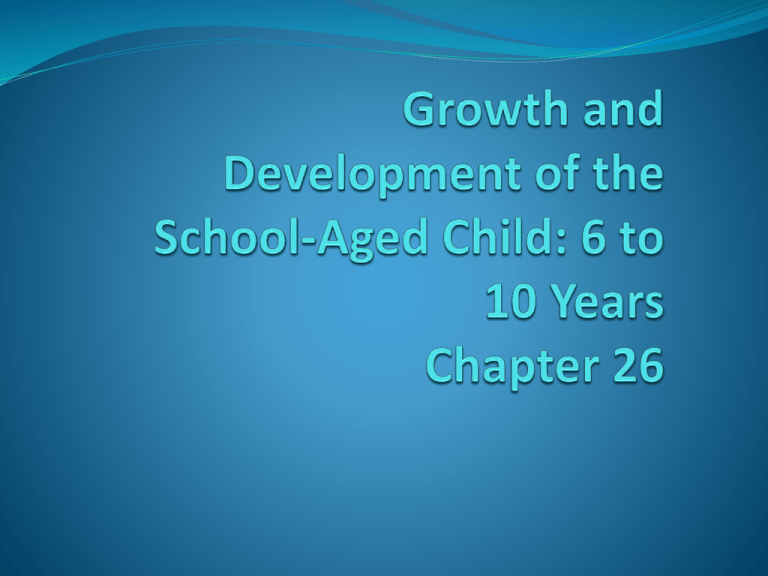
OBJECTIVES
1.
State the major developmental task of the school-aged group according to Erikson.
2.
Discuss the physical growth patterns during the school-aged years.
3.
Describe dentition in school-aged children.
4.
Discuss the psychosocial development of the school-aged child.
5.
Explain the cognitive development seen in the school-aged children regarding (a) conservation, (b) decentration, (c) reversibility, and (d)
classification.
6.
Identify nutritional influences on the school-aged child, including (a) family attitudes, (b) mealtime atmosphere, (c) snacks, and (d) school’s
role.
7.
List three factors that contribute to obesity in the school-aged child.
8.
State two appropriate ways to help an obese child control weight.
9.
Discuss recommended health promotion and maintenance for the school-aged child, including: (a) scoliosis screening, (b) vision and hearing
screening, (c) dental hygiene, (d) exercise, and (e) sleep.
10.
Discuss the need for sex education in the school-aged group and describe the role of the family, school, and others in this education.
11.
Describe principles that a family caregiver can use to teach children about substance abuse.
12.
Identify common inhalant products that children may use as deliriants.
13.
Describe safety education appropriate for the school-aged group.
14.
Discuss the effects of the progression in the 6- to 10-year-old child’s concept of biology, including the concepts of (a) birth, (b) death, (c)
human body, (d) health, and (e) illness.
15.
Identify factors that may influence the school-aged child in the health care facility.
Growth and Development of the
School-Age Child
Areas of dramatic change between 6 and 10 years
First day of school
Thinking process
Social skills
Activities
Attitudes
Use of language
Industry vs. inferiority
-if unsuccessful in completing activities during this
stage, children develop a feeling of inferiority
-success with completing the activities in this stage
provides the child with self-confidence
Growth and Development of the
School-Age Child (cont.)
Health becomes community concern
Starting school
Physical exam
Immunizations
Usually healthy time of child’s life
Accidents still pose serious hazard
Physical Development
Weight and height
Growth is slow and steady
Gains about 5 lbs. annually
Annual height increase about 2.5” (6 cm)
Period ends in the preadolescent growth spurt
Changes in dentition
Starts to lose deciduous (baby) teeth at about 6 years
Eruption of permanent teeth, 6 year molars (directly
behind the deciduous molars)
These are important: key or pivot teeth-help shape the
jaw and affect the alignment of the permanent teeth
ERUPTION OF PERMANENT TEETH
Physical Development (cont.)
Changes in skeletal growth
Spine is straighter
Abdomen is flatter
Body is generally more slender and long-legged
Bone growth in long bones
Cartilage is being replaced by bone at the epiphyses
(growth centers at the end of long bones and at
wrists)
Skeletal maturation is more rapid in girls than in boys
SKELETAL GROWTH
10 YEAR OLD
6 YEAR OLD
Question
Tell whether the following statement is true or false.
Erikson’s developmental task for this age group is
industry versus inferiority.
Answer
True
Rationale: Erikson’s developmental task for this age
group is industry versus inferiority.
Q#1
Psychosocial Development
Displays a sense of duty and accomplishment
Engages in meaningful projects and sees them through
to completion
Applies the energies earlier put into play to
accomplishing tasks
Refines motor, cognitive, and social skills
Develops a positive sense of self
Psychosocial Development (cont.)
Not all children are ready for this stage due to
environmental deprivation, a dysfunctional family,
insecure attachment to parents, and immaturity
Unrealistic or excessive goals can cause problems later in
life
When environmental support is adequate child should
complete several personality development tasks at this
age:
‒
‒
‒
‒
Developing coping mechanisms
Developing a sense of right and wrong
Accomplishing a feeling of self-esteem
Displaying ability to care for oneself
Psychosocial Development (cont.)
School age thought processes
7 years – Piaget’s concrete operational stage begins
Skills of conservation (the ability to recognize that a
change in shape does not necessarily mean a change in
mass or amount) significant
Conservation of numbers, number of cookies does not
change when rearranged
Conservation of mass, amount of cookie dough is the
same whether in ball form or flattened
Conservation of weight, a pound is a pound whether
plastic or brick
Conservation of volume, half a glass of water is the
same regardless of shape of the container (11-12 yrs.)
Psychosocial Development (cont.)
Each child is product of
Personal heredity
Environment
Cognitive ability
Physical health
Every child needs love and acceptance
Understanding, support and concern when mistakes
are made
Thrive on praise and recognition
Psychosocial Development (cont.)
Factors affecting self-confidence
Consistent rules
Positive attention
Clear expectations
Psychosocial Development (cont.)
Development from ages 6 to 7
Still employs magical thinking
Can sit still for short periods of time
Understands taking turns
Enjoys group activities
Begins to enjoy participating in real-life activities
Psychosocial Development (cont.)
Development from ages 7 to 10
Questions parental standards as the ultimate authority
Becomes more impressed by the behavior of peers
Is increasingly interested in group activities
Moves from preoperational, egocentric thinking to
concrete, operational, decentered thought
Psychosocial Development (cont.)
Development from ages 7 to 10
Concepts displayed by the 7- to 10-year-old child
Decentration
‒ Being able to see several aspects of a problem at the
same time and to understand the relation of various
parts to the whole situation
‒ Cause-and-effect relations become clear
‒ Magical thinking begins to disappear
Psychosocial Development (cont.)
Concepts displayed by the 7- to 10-year-old child (cont.)
Reversibility
‒ Conservation of continuous quantity
‒ The ability to think in either direction
Classification
‒ The ability to group objects into a hierarchical
arrangement
‒ Collections
Question
A school-age child aged 7-10 years moves from
preoperational, egocentric thinking to what?
a. Concrete, operational, centered thought
b. Concrete, operational, decentered thought
c. Cognitive, operational, centered thought
d. Cognitive, operational, decentered thought
Answer
b. Concrete, operational, decentered thought
Rationale: Important changes occur in a child’s thinking
processes at about age 7 when there is movement from
preoperational, egocentric thinking to concrete,
operational, decentered thought.
Q#2
Nutrition
As coordination improves, the child becomes
increasingly active
Requires more food to supply necessary energy
The nutritional needs of the school-age child should
be met by choosing foods from all the food groups
Increased appetite and a tendency to go on food “jags”
are typical
Offer choices
Supervise snacking habits
Matter-of-fact attitude about food by caregivers
Provide a positive mealtime atmosphere
Nutrition (cont.)
Obesity can be a concern
Causes
Genetic, environmental, or sedentary lifestyle factors
Interventions
Appropriate physical activity (moderately active for 60
minutes every day, or most days)
Limiting fat intake (no more than 35% of total
calories)
Positive caregiver support
-avoid nagging
-avoid “clean your plate” rule
-limit fast food meals
Nutrition (cont.)
Health teaching at school
Reinforce proper diet
Subsidized breakfast and lunch programs
Provide well-balanced meals (often children only eat part)
Old enough to be partially responsible for packing own
lunch
Post school lunch menus
Q#3
Health Promotion and Maintenance
Routine checkups
Annual physicals
Booster of tetanus–diphtheria vaccine every 10 years
throughout life (Appendix J)
Visit to the dentist at least twice a year
10-11 years: first exam for scoliosis
Vision and hearing screening-before entrance to school
and on a periodic basis (annual, biannual)-often
conducted by the school nurse
Health Promotion and Maintenance
(cont.)
Family teaching
Proper dental hygiene-particularly 6 yr. molars
Exercise and sufficient rest (6 yr. old-12 hrs./night & quiet
time after school to recharge; 7-10 yr. old/)
Health education
Caregivers should teach child about
Basic hygiene
Sexual functioning
Substance abuse
Accident prevention
School should include same topics in curriculum
Health Promotion and Maintenance
(cont.)
Health education (cont.)
Sex education-time and place for formal education
remains controversial
Includes
‒ Helping children develop positive attitudes about
their own bodies
‒ Their own sex
‒ Their own sexual role to achieve optimum
satisfaction in being a boy or a girl
Health Promotion and Maintenance
(cont.)
Sex education (cont.)
At various places in curriculum-often limited to 1 class,
usually 5th grade
Covers different topics in different school systems-watch
films about menstruation and developing bodies;
separate classes for boys and girls
Caregivers may want to use printed materials
Teach about HIV
Health Promotion and Maintenance
(cont.)
Health education (cont.)
Substance abuse education
“Just say no” programs
Teach unhealthy aspects of tobacco, alcohol and drug
use
Children may experiment with inhalants
‒ May contain deliriants
‒ Can cause death
HEALTH PROMOTION AND
MAINTANENCE CONT’D
Common Products Inhaled as Deliriants-Box 26-1
• Model glue
Varnish
Rubber cement
Shellac
Cleaning fluids
Hair Spray
Kerosene vapors
Nail polish remover
Gasoline vapors
Liquid typing correction fluid
Butane lighter fluid
Propellant (whipped cream)
Paint sprays
Aerosol paint cans
Paint thinner
Solvents
Health Promotion and Maintenance
(cont.)
Substance abuse education
Family caregivers should
‒ Teach family’s values
‒ Teach difference between right and wrong
‒ Set and enforce rules of acceptable behavior
‒ Learn facts about drugs and alcohol
‒ Actively listen to the children in the family
Q#4
Health Promotion and Maintenance
(cont.)
Accident prevention-remains leading cause of death
Children must learn safety rules and practice them until
they are routine
Children should know
Their full name
Caregivers’ names
Home address
Telephone number
How to call 911
Health Promotion and Maintenance
(cont.)
Safety topics for school-age group-page 598
Traffic signals and safe pedestrian practices
Safety belt use for car passengers
Bicycle safety
Skateboard and skating safety
Swimming safety
Danger of projectile toys
Danger of all terrain vehicles
Use of life jacket when boating
Question
Health promotion and maintenance is important in this
age group. What is one topic that is important for the
caregiver to teach the child?
a. Positive body image
b. How to use the stove
c. How to call the health care provider
d. Basic hygiene
Answer
d. Basic hygiene
Rationale: Caregivers have a responsibility to teach the
child about basic hygiene, sexual functioning,
substance abuse, and accident prevention.
The School-Age Child in the Health
Care Facility
More accepting of experience than younger children
These children have changing concepts of
Birth
Death
The human body
Health and illness
The School-Age Child in
the Health Care Facility
CONCEPT
6-8 YEARS
8-10 YEARS
IMPLICATIONS FOR
NURSING
Birth
See babies as a
result of 3 factors:
social and sexual
intercourse and
biological fusion
Begin to put 3
components together;
sperm and egg come
together –not sure why
Cultural & educational
factors play a part in
development of where
babies come from
Tend to see baby
as emerging from
female only; from
outside forcecreated whole
Fewer discrepancies in
knowledge based on sex
differences
Nurse should assess child’s
idea about birth; can they
understand where babies
come from and how before
teaching
Boys know less
than girls about
baby information
Explain roles of both parents,
but the idea of sperm and
egg union may not be
understood until 8 or 9 years
old
The School-Age Child in
the Health Care Facility
CONCEPT
6-8 YEARS
8-10 YEARS
IMPLICATIONS FOR
NURSING
Death
May be viewed as
reversible
Considered irreversible
Change from vague view
of death as reversible
and caused by external
forces to awareness of
irreversibility and bodily
causes
Animism (attribution
of life) may be seen in
some children; death
is viewed as result of
outside force
Ideas about what happens Fears about death more
after death unclear;
common @ 8; adults
related to concreteness of should alert to this
thinking and socioreligious upbringing
Experiences with
death facilitate
concept development
Explanations about
death, the fact their
thoughts will not cause
a death, they will not
die (if illness is not
fatal) are needed
The School-Age Child in
the Health Care Facility
CONCEPT
6-8 YEARS
8-10 YEARS
IMPLICATIONS FOR
NURSING
Human
Body
Know body holds
everything inside
Can understand
physiology
Cultural factors may
play a part in ability and
willingness to discuss
bodily functions
Use outside world to
explain
Use general
principles to explain
body functions
Educational programs
can be very effective
because of natural
interest
Aware of major organs
Interested in
invisible functions of
the body
Assess knowledge of
body by using diagrams
before teaching
Interested in visible
functions of body
The School-Age Child in
the Health Care Facility
CONCEPT
6-8 YEARS
8-10 YEARS
IMPLICATIONS FOR
NURSING
Health
See heath as doing
desired activities
See health as doing
desired activities
Need assistance in
seeing cause and effect
List concrete
practices as
components of
health
Understand cause and
effect
Capitalize on
positiveness of concept;
health lets you do what
you really want to do
Many do not see
sickness as related to
health; may not
consider cause and
effect
Believe it is possible to
Young children who are
be part healthy and part sick may feel they will
not at the same time;
never get well again
can reverse from health
to sickness and back to
health
The School-Age Child in
the Health Care Facility
CONCEPT
6-8 YEARS
8-10 YEARS
IMPLICATIONS FOR
NURSING
Illness
Sick children may see
illness as
punishment;
evidence suggests
that healthy children
do not see illness as
punishment
Same as 6-8 years of
age; can identify
illness states, report
bodily discomfort,
recognize that illness
is caused by specific
factors
Social factors play a part in
illness concept
Highly anxious
children more likely
to view illness as
disruptive
Recognize that some see
illness as punishment
Sickness is a diffuse
state; rely on others
to tell them when
they are ill
Encourage self-care and
self-help behavior,
especially in older children
The School-Age Child in the Health
Care Facility (cont.)
Anxious about looking different than others their age
May be uncomfortable with nurse of the opposite sex
Inform families and children of rules as part of
admission process
Nursing Care for the School-Age
Child in a Health Care Facility
Explain all procedures to children and their families
Show equipment and material to be used
Outline realistic expectations of procedures and
treatments
Answer children’s questions truthfully
Give children an opportunity to verbalize anxieties
Respect desire for privacy

